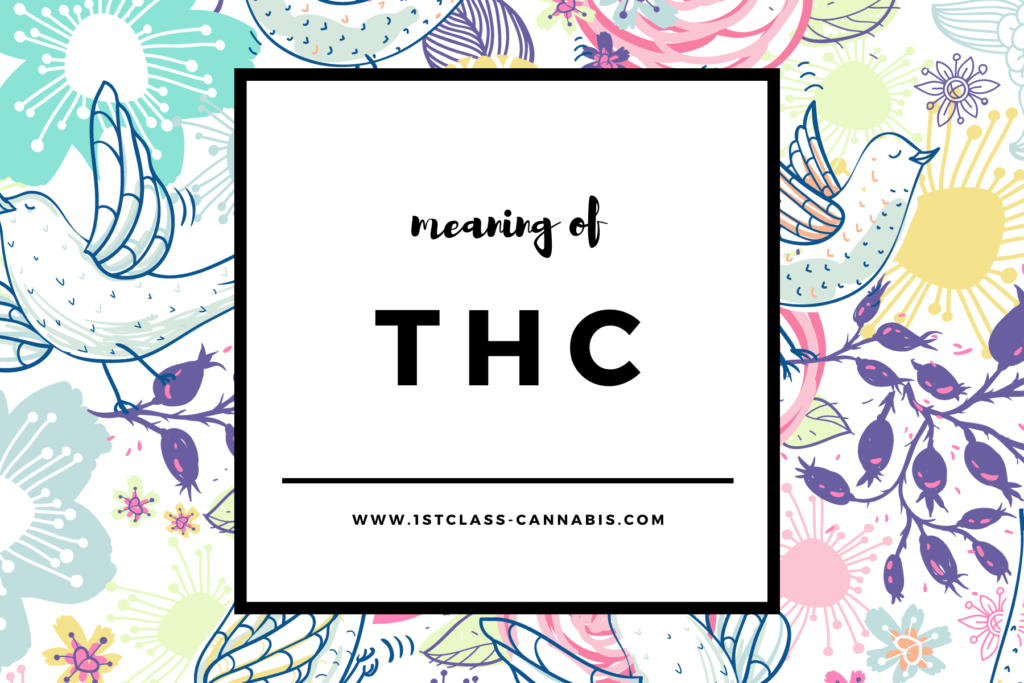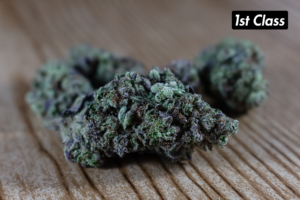
Tetrahydrocannabinol (THC) : the chemical formula for THC (C21H30O2)
Tetrahydrocannabinol (THC) is one of the most well-known and controversial compounds found in the cannabis plant. As the primary psychoactive component, THC is responsible for the intoxicating effects commonly associated with marijuana use. Despite its notoriety, THC is also a fascinating compound that has garnered significant interest from researchers and medical professionals due to its potential therapeutic benefits. This article delves into the science behind THC, its effects on the human body, and the ongoing research to uncover its medicinal properties.
How THC Interacts with the Body
When THC is consumed, it enters the bloodstream and travels to the brain, where it interacts with specific receptors of the ECS, primarily the CB1 receptors. This interaction leads to the release of neurotransmitters like dopamine and serotonin, which are responsible for the euphoric “high” experienced by users
THC extract is obtained through various extraction methods that isolate the cannabinoid from the cannabis plant. The most common techniques include CO2 extraction, ethanol extraction, and butane hash oil (BHO) extraction. Each method has its advantages and disadvantages, but all aim to concentrate THC and other cannabinoids into a potent form. THC extract typically takes the form of an oil, resin, wax, or shatter, depending on the specific extraction method used. These extracts contain significantly higher THC concentrations than the cannabis plant itself, often reaching levels of 50-90% THC, making them much more potent.
- Recreational Use and Effects : primarily associated with recreational cannabis use, where it is commonly used for its intense psychoactive effects. When consumed, whether through smoking, vaporization, or dabbing, the high concentration of THC rapidly reaches the brain, leading to euphoria, altered perception of time, and heightened sensory experiences.
- Medical use
- Chronic Pain Management: THC‘s analgesic properties have shown promise in alleviating chronic pain, including pain associated with conditions like multiple sclerosis and cancer.
- Nausea and Vomiting: THC has been studied for its antiemetic effects, making it a potential option for patients undergoing chemotherapy and experiencing severe nausea and vomiting.
- Appetite Stimulation: THC’s ability to stimulate appetite may benefit individuals with eating disorders or those undergoing treatments that suppress their appetite.
- Neurological Disorders: Some studies have explored the potential neuroprotective effects of THC in conditions like Alzheimer’s disease and epilepsy.
- Mental Health: Despite some controversies, THC has been investigated for its potential role in managing symptoms of certain mental health conditions, such as anxiety and PTSD.
THC-Infused Edibles
THC-infused edibles have gained immense popularity for several reasons. Firstly, they offer an alternative and discreet method of cannabis consumption compared to smoking or vaping, making them appealing to individuals who prefer not to inhale smoke. Additionally, the variety of flavors and forms, from gummy bears to brownies, makes edibles a more enjoyable and palatable option for users, especially those who may find the traditional taste of cannabis less appealing.
Tetrahydrocannabinol (THC) remains a subject of both fascination and controversy. While its psychoactive effects have been the center of recreational cannabis use, scientific research continues to explore its potential therapeutic benefits. From managing chronic pain to aiding in the treatment of various medical conditions, THC’s medicinal applications are promising. Nevertheless, more research is needed to fully understand its effects and risks to maximize its potential benefits while minimizing potential adverse outcomes.
Cannabis Legalization World Map: UPDATED
Australia – Status: Medically legalized/Partially decriminalized
Canada – Status: Full federal legalization
Chile – Status: Medically legalized
Colombia – Status: Medically legalized/Decriminalized
Croatia – Status: Medically legalized
Ecuador – Status: Decriminalized
Germany – Status: Medically legalized/Decriminalized
Greece – Status: Medically legalized
India – Status: Federally illegal, but legal in some states
Ireland – Status: Medical Pilot Program legalized
Israel – Status: Medically legalized
Italy – Status: Medically legalized
Jamaica – Status: Partially medically legalized/Decriminalized
Macedonia – Status: Medically legalized
Mexico – Status: Medically legalized/Decriminalized
Philippines – Status: Medical cannabis legislation in progress
Poland – Status: Partially medically legalized
Puerto Rico – Status: Medically legalized
South Africa – Status: Legal and decriminalized, but not available for sale
Turkey – Status: Medically legalized
Uruguay – Status: Legalized
Zimbabwe – Status: Medically legalized
Thailand – Status: Full federal legalization
cannabis in Thailand : what need to know
- Who can consume cannabis?
- People older than 20 and who are not pregnant or breastfeeding are legally allowed to consume cannabis.
- Where can you consume it? :
- Smoking it can be done inside an individual’s residence, and cannabis inside food can be consumed at a licensed restaurant. Smoking marijuana in public places such as schools, temples and shopping malls can lead to a 25,000 THB
- Where can you buy ?
- There are more than 5,000 weed stores across the country, selling the cannabis flowers, pre-rolled joints, edibles with a tetrahydrocannabinol (THC) level below 0.2%, infused foods and CBD oil. In cities such as Bangkok, Chiang Mai and Pattaya, dispensaries can easily be found.
- Can you grow it?
- individuals must register with the country’s Food and Drug Administration. A permit is also needed to use cannabis flower buds for research, export or processing for commercial purposes.
source :
- Russo, E. B. (2008). Cannabinoids in the management of difficult to treat pain. Therapeutics and Clinical Risk Management, 4(1), 245–259. doi: 10.2147/tcrm.s1928
- Huestis, M. A. (2007). Human Cannabinoid Pharmacokinetics. Chemistry & Biodiversity, 4(8), 1770–1804. doi: 10.1002/cbdv.200790152
- Pertwee, R. G. (2006). Cannabinoid pharmacology: The first 66 years. British Journal of Pharmacology, 147(S1), S163–S171. doi: 10.1038/sj.bjp.0706406
- Hill, K. P., Palastro, M. D., Johnson, B., & Ditre, J. W. (2017). Cannabis and Pain: A Clinical Review. Cannabis and Cannabinoid Research, 2(1), 96–104. doi: 10.1089/can.2017.0017
- https://www.theguardian.com/society/2023/jan/10/consuming-cannabis-in-thailand-what-tourists-need-to-know-marijuana-weed-rules
- https://www.cannabisbusinesstimes.com/article/cannabis-legalization-world-map/




